What the designer smoked: an unusual firearm
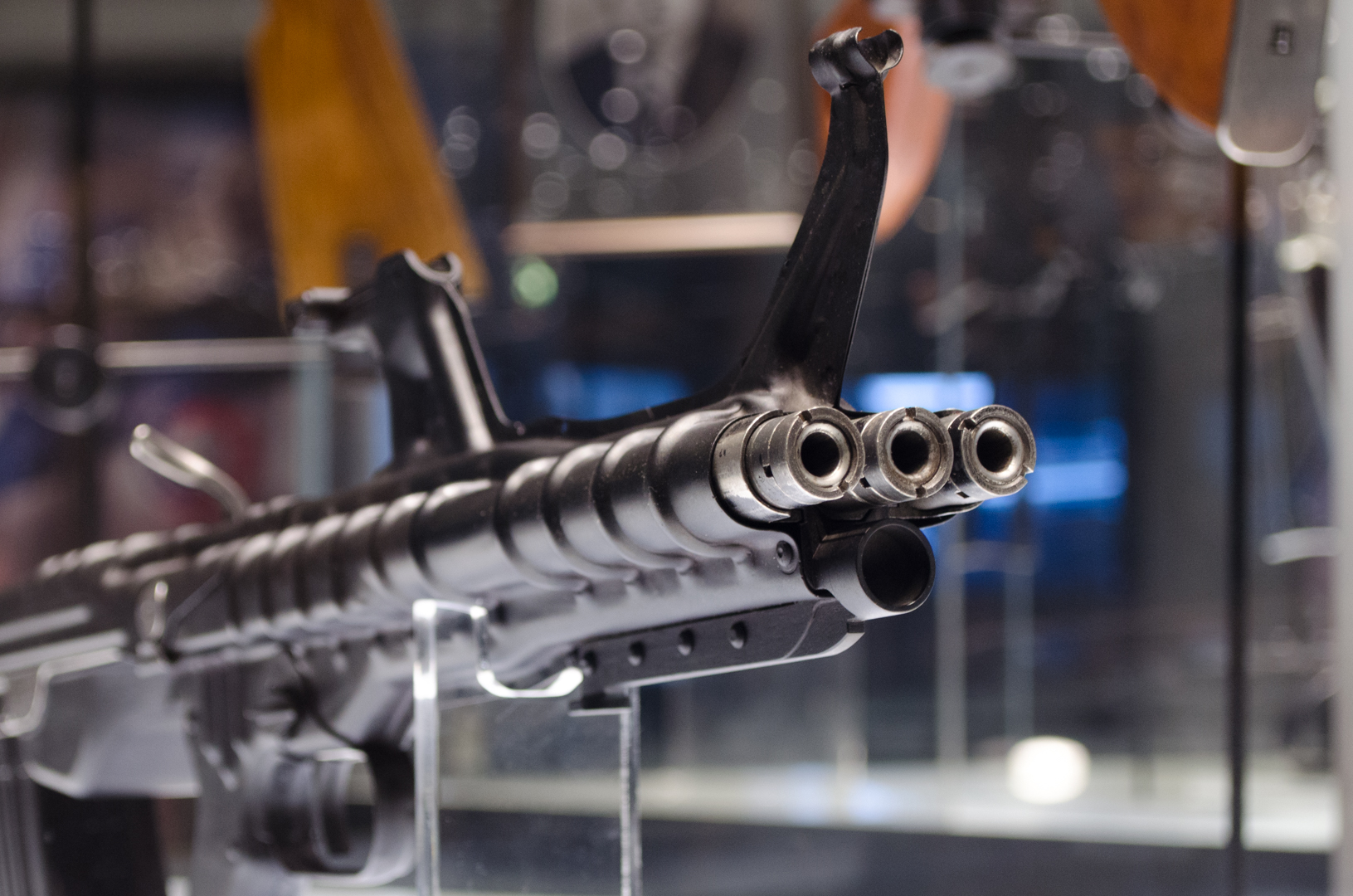
Not only military robots, drones, combat lasers and other cutting-edge technical solutions can be interesting. This post is about a few ingenious designs in which there is not a single gram of electronics. A hybrid of a pistol and a revolver under a “triangular” cartridge, a three-barreled Soviet machine gun and a cuckoo-free shooting clock — military wonders from the middle of the last century, which would have looked great in a science fiction film.
"Revolvers" Dardick

In the 1950s, the United States experimented with alternative methods of ammunition for machine guns. It seems then it was noticed that if the cartridge had a triangular sleeve, it would take less space in the store. Nobody seriously considered this idea until the American David Dardick decided that the “triangular” cartridge would be ideal for a weapon combining the simplicity of the design of a revolver with a large ammunition of a pistol.
')
In 1958, Dardik patented an open chamber gun for a Tround cartridge (from Triangular Rounds) with a plastic sleeve in the shape of a Relo triangle . I will call the weapon of Dardik a revolver, but this is a convention. It was a hybrid design that Uncle Colt would not have had in a nightmare.
In the handle of Dardik revolvers there is an integral magazine for 11, 15 or even 20 cartridges, depending on the modification. It is charged through a special window on the side of the weapon.
From the magazine, cartridges under pressure from the spring are fed into the drum of the revolver. Holes in it are bored out and devoid of the outer wall. In part, its function is performed by the cartridge case itself, which restrains powder gases, and partly by the pistol frame, which does not allow the sleeve to deform when fired.

After pressing the trigger, the drum rotates a third of a turn, the trigger is cocked and lowered - all due to the muscular strength of the shooter. The cartridge case is ejected by centrifugal force; a new cartridge arrives at the barrel line.
Dardik designed weapons for the civilian market and did not hesitate to talk in advertising about the main advantage of his invention. Bullets of the most different caliber easily fit into standard massive sleeves: .38 (9 mm), .22 (5.56 mm), .30 (7.62 mm). Know only change removable trunks. The inventor even made an accessory that turned the revolver into a lightweight carbine.

However, the popularity of the Dardik revolvers is not earned. The blame for the high price of the weapon and its unusual ammunition.
Interestingly, 10 years after the cessation of sales, Harrington & Richardson gunsmiths turned to Dardik for advice. They needed help creating a rifle to participate in the SPIW ( Special Purpose Individual Weapon ) competition, dedicated to ways to drastically improve infantry weapons.

An experimental H & R SPIW rifle was supposed to use a Tround cartridge with three dart bullets, similar to those feathered sabot projectiles that are being produced on armored vehicles today.
The rifle was removed from the competition. The design was dangerously unreliable. Harrington & Richardson did not bother to close the chamber. The breakthrough of powder gases in dangerous proximity to the face of the arrow prevented only a plastic sleeve.
Arrow and multi-cartridge ammunition is a topic that deserves a separate story. Here I will only note that several bullets in one ammunition fired with one shot should, in theory, get more crowded than a line of three shots due to the smaller recoil of the barrel.
However, there was an even more radical way to increase accuracy while maintaining the density of fire — salvo firing from several trunks at once. And although some Russian-language sources say that H & R SPIW had three trunks, most likely this is inaccuracy. Common sense, the available images, the design of the cartridge and one of the patents suggest that the trunk was still one, but three-channel.
Three-barreled machine TKB-059
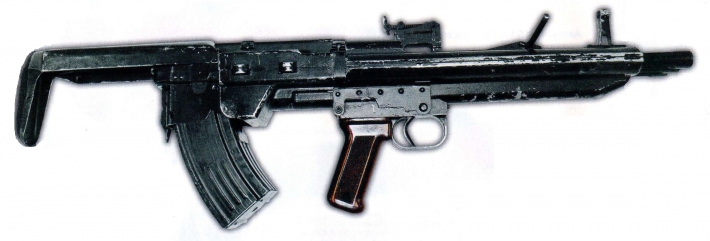
There are other multi-barreled machines. One of them, a three-barreled one, was assembled in Tula under the leadership of German Alexandrovich Korobov in 1962.
The prototype known as the “PZ Device” had three separate trunks, borrowed some of the nodes from the Kalashnikov, but had an ultra-modern bullpup layout by the standards of that time - the built-in magazine for 60 rounds was located behind the handle.
From the photos available it can be seen that the prototype was made rather roughly and is nothing more than a demonstration sample.

Nevertheless, Korobov was instructed to finalize the design and in 1966 showed the military TKB-059 - a fantastic machine gun, in which nothing was left of Kalashnikov. Today it can be seen in the Tula Museum of Weapons.
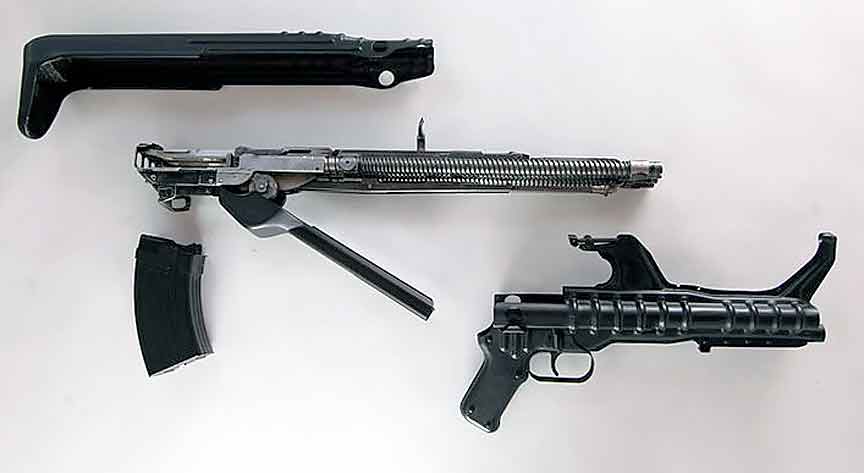
Case TKB-059 is split in two. The internal mechanisms are a single unit, rolling back along the guides in the body of the weapon under the effect of recoil - the so-called monitor mode automation. Recoil energy is used to reload weapons.
With a weight of 4.15 kg, the machine gun has an ammunition of 45 rounds.
TKB-059 passed state tests and showed better accuracy than the modified Kalashnikov assault rifle, but it was not accepted for service. The unusual design would embarrass anyone, but rather the matter is in objective reasons - the difficulty of loading stores, the inability to fire single and the absence of "demand". According to the characteristics of the military and arranged AKM.
Heckler & Koch G11 assault rifle

Another development that I would like to tell about is the German G11 rifle for a caseless cartridge. Its development began in 1967, when the German Defense Ministry was looking for a replacement for the aging Heckler & Koch G3.
Heckler & Koch considered promising the idea of reducing the mass and dimensions of ammunition by eliminating the liner. Lightweight and compact cartridges would allow soldiers to carry more ammunition, and also had to revolutionize the design of an automatic weapon that no longer needed a mechanism for ejecting liners.
The patron of the future in the view of the Germans was a bullet pressed into an explosive charge. His creation was entrusted to the company Dynamit Nobel AG .
Early versions of the cartridge had a caliber of 4.3 mm and was a lacquered powder checkers with a bullet glued into the front. However, they spontaneously ignited, hitting a chamber overheated by intensive firing.
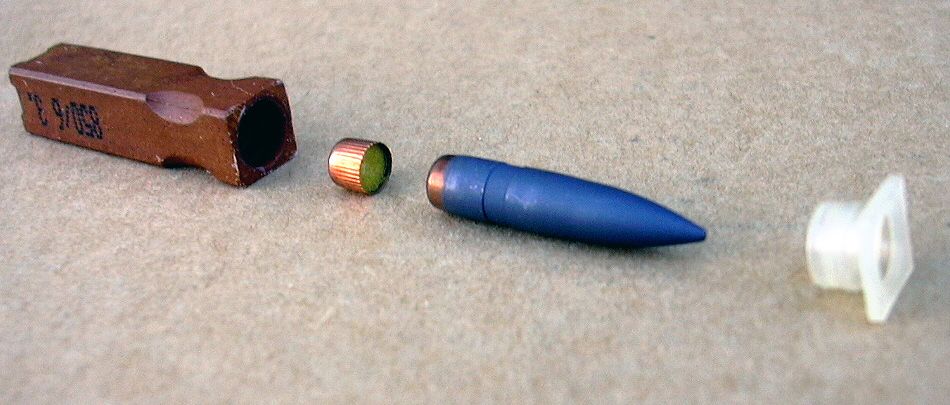
This problem was solved only in the 80s, having designed a telescopic 4.73 mm DM11 cartridge based on heat-resistant HMX .
A series of prototypes chambered for the DM11 included a pistol, machine gun, submachine gun, but gradually the work was reduced to the only assault rifle - Heckler & Koch G11. Its design is monstrously complex.
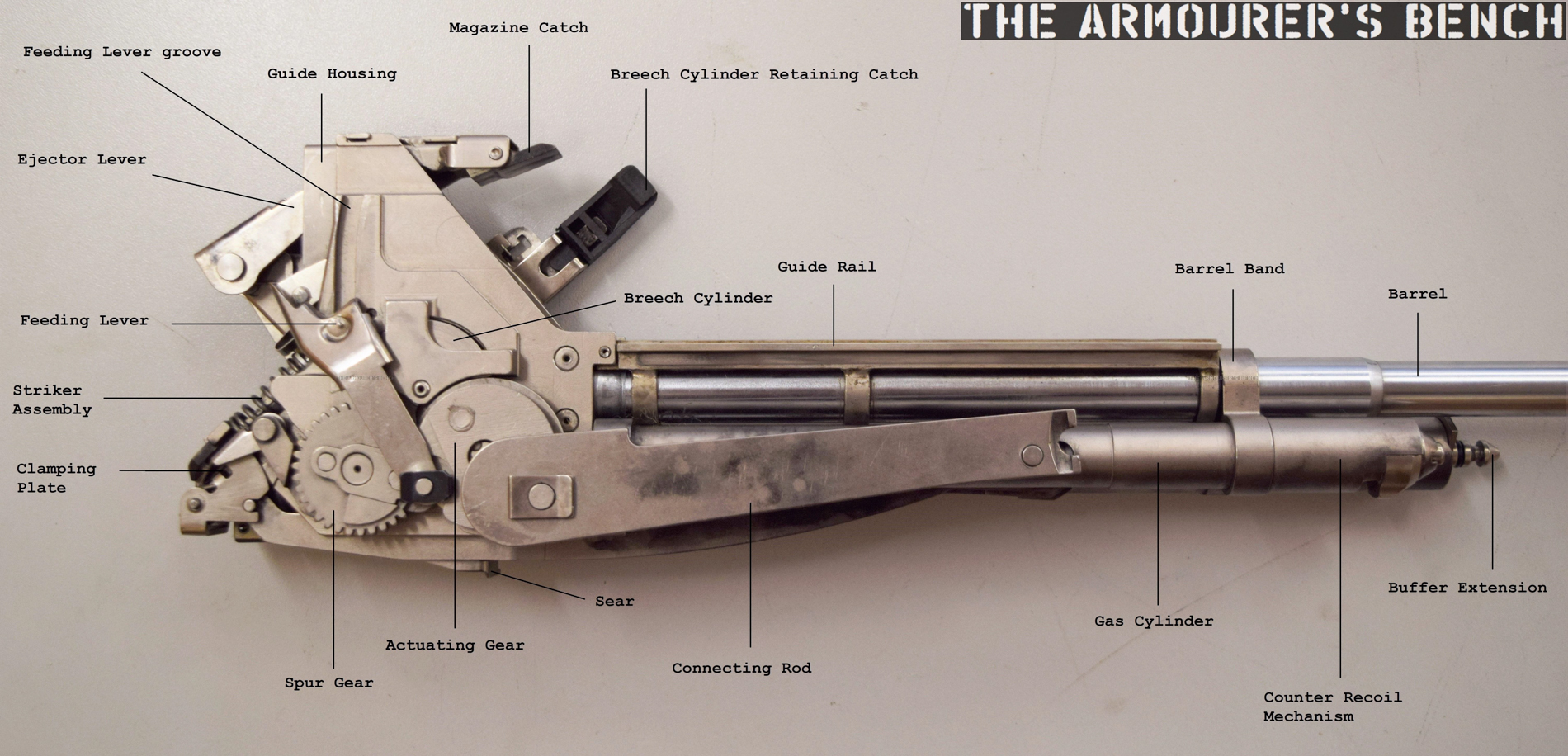
Like the Korobov rifle, the G11 is built according to a monitors scheme, but this is the only thing that makes it related to its counterparts. Heckler & Koch G11 ironically nicknamed "German clock cuckoo clock", and for good reason. The insides of a rifle really resemble a clockwork.
I do not undertake to exhaustively describe what is happening inside the body during a shot. Even the video disassembly G11 does not give a complete picture of the mechanisms.
The essence is as follows. A box magazine for 45 or 50 sleeveless cartridges is inserted from above, along the barrel. Ammunition from it is fed vertically down and fall into the key structural element - a rotating cylinder. It serves as a chamber chamber. The cylinder rotates 90 degrees, the cartridge is in line with the barrel. A drummer works, a shot takes place.
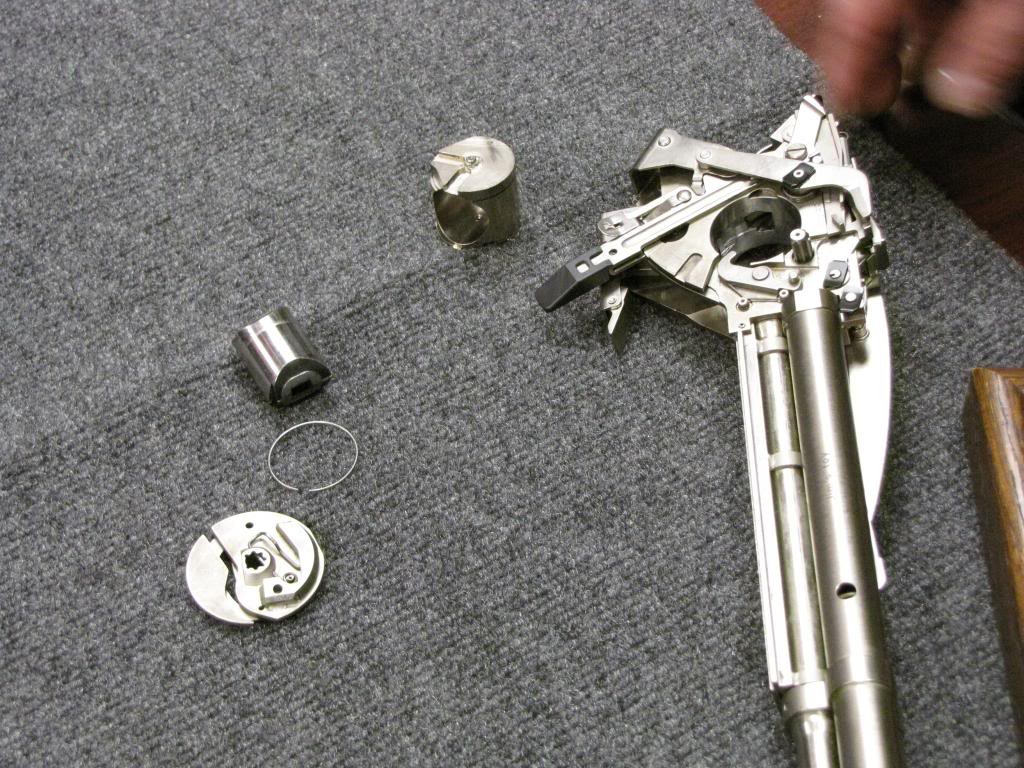
Oddly enough, the G11 came to military trials. Germans with enviable persistence continued to develop until the 90s of the last century. It seems that only the final standardization of ammunition within NATO could stop them.
Schemes, documentation, and other designs for the project in 2004 were acquired by US military contractors for the Lightweight Small Arms Technologies program. The fate of the G11 is unknown. Practices could be classified or completely forgotten, with the latter more likely.
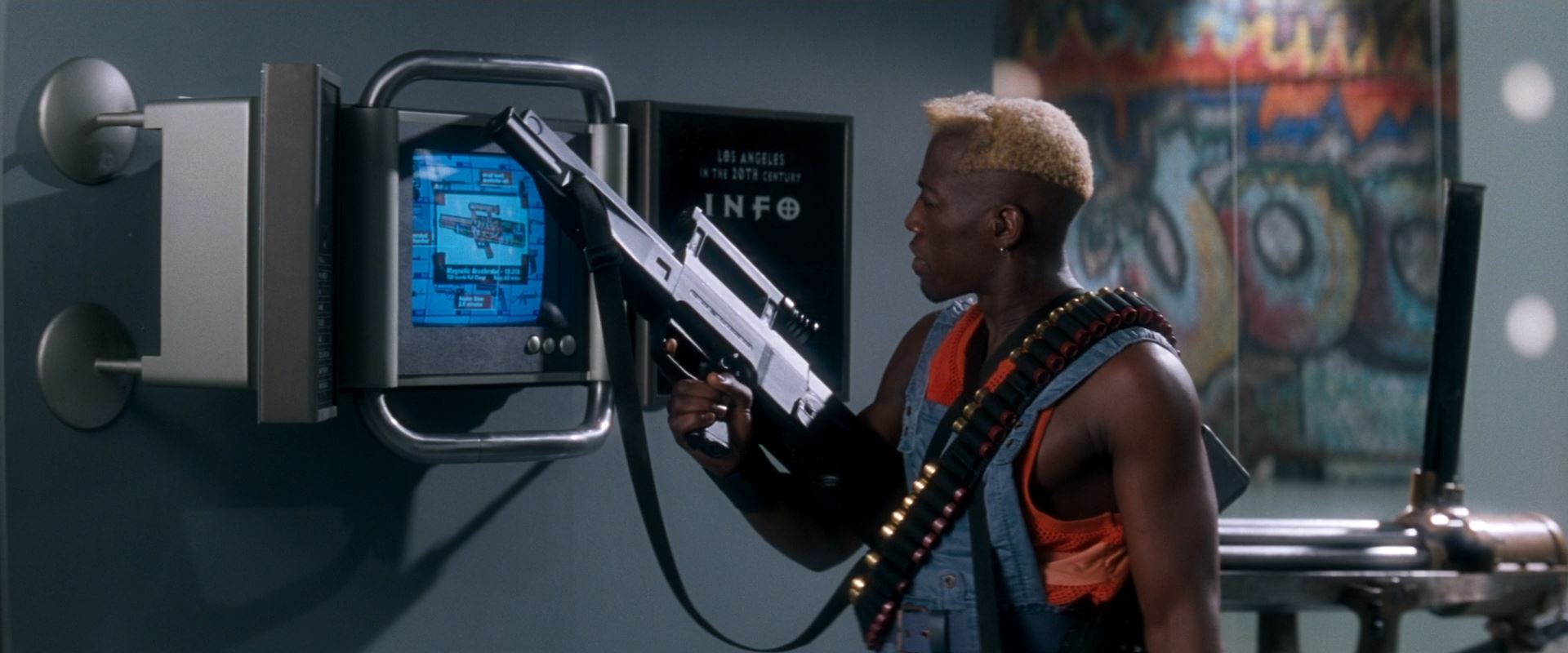
Only in the parody of the bright world of the future could G11 be adopted.
But Heckler & Koch G11 left a mark in popular culture. She can be seen in the action movie “Demolition Man” (Demolition Man, 1993), games such as Fallout 2, Jagged Alliance 2, 7.62 High Caliber, Metal Gear Solid: Peace Walker, Call of Duty: Black Ops and even in anime: Neon Genesis Evangelion and Darker Than Black. Not such a bad ending, if you think about it.
PS I rarely write great texts about weapons, but I regularly write in Gungram Telegram on GunFreak . If you are interested in the subject, welcome.
Source: https://habr.com/ru/post/443764/
All Articles